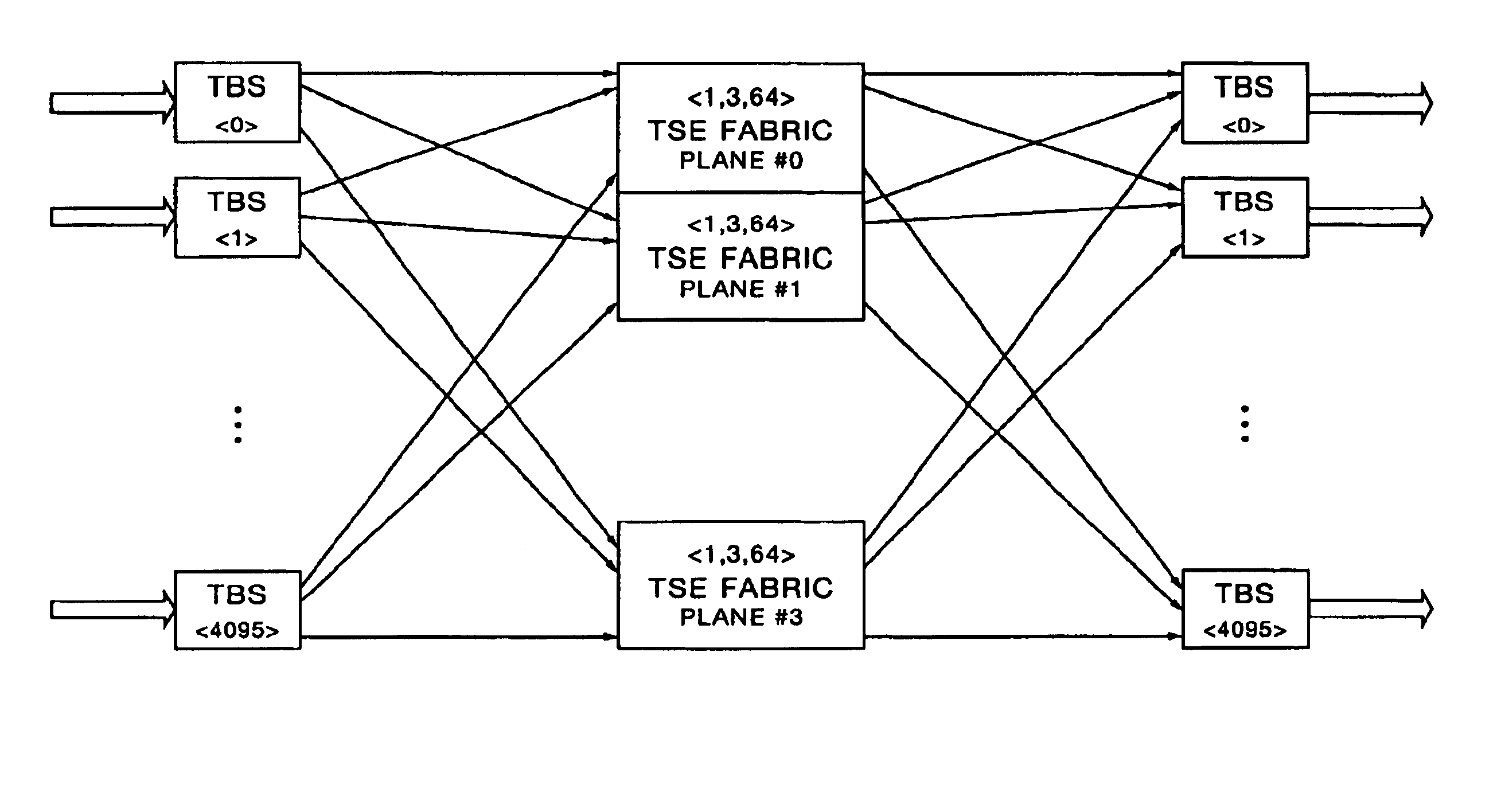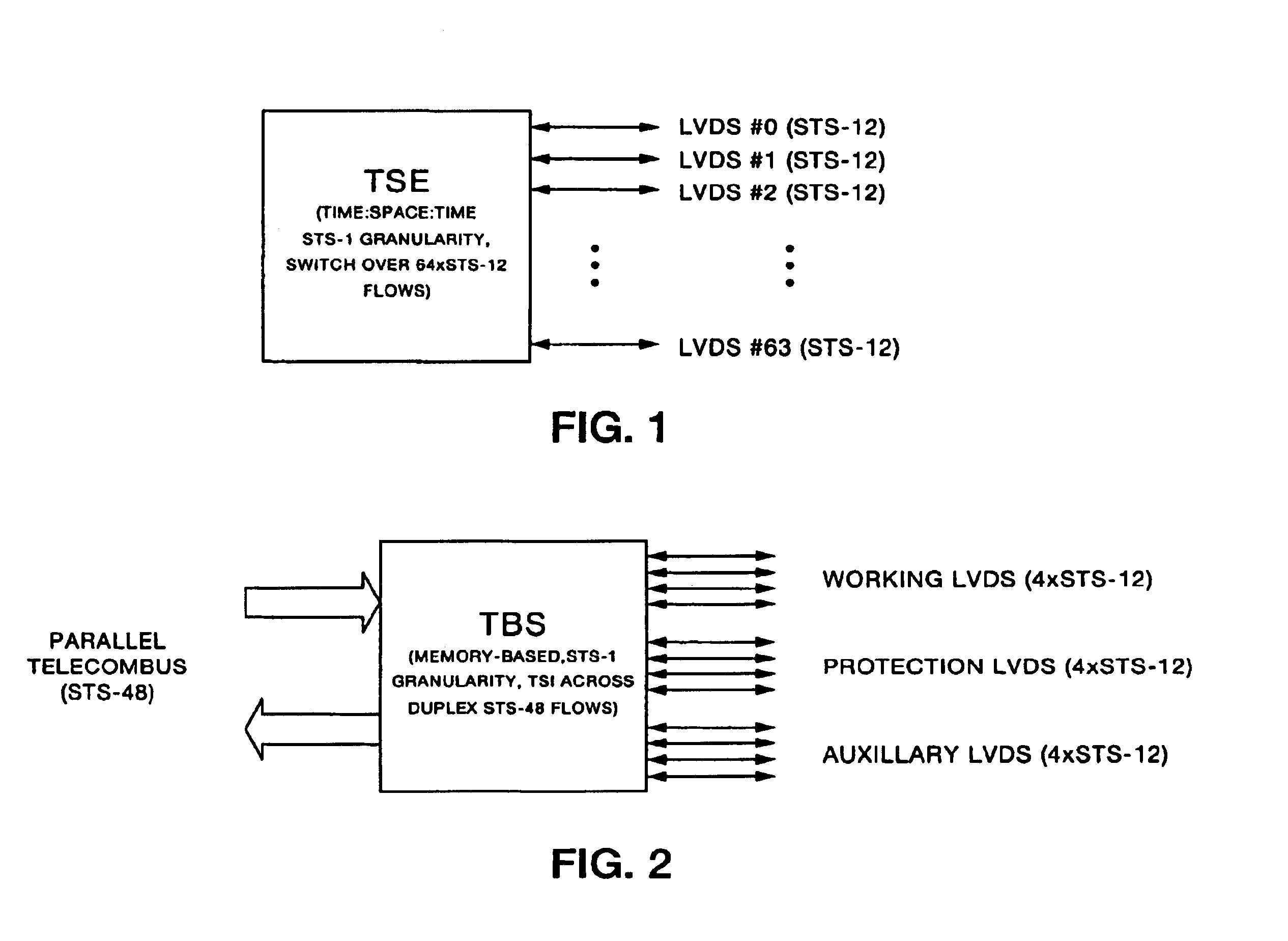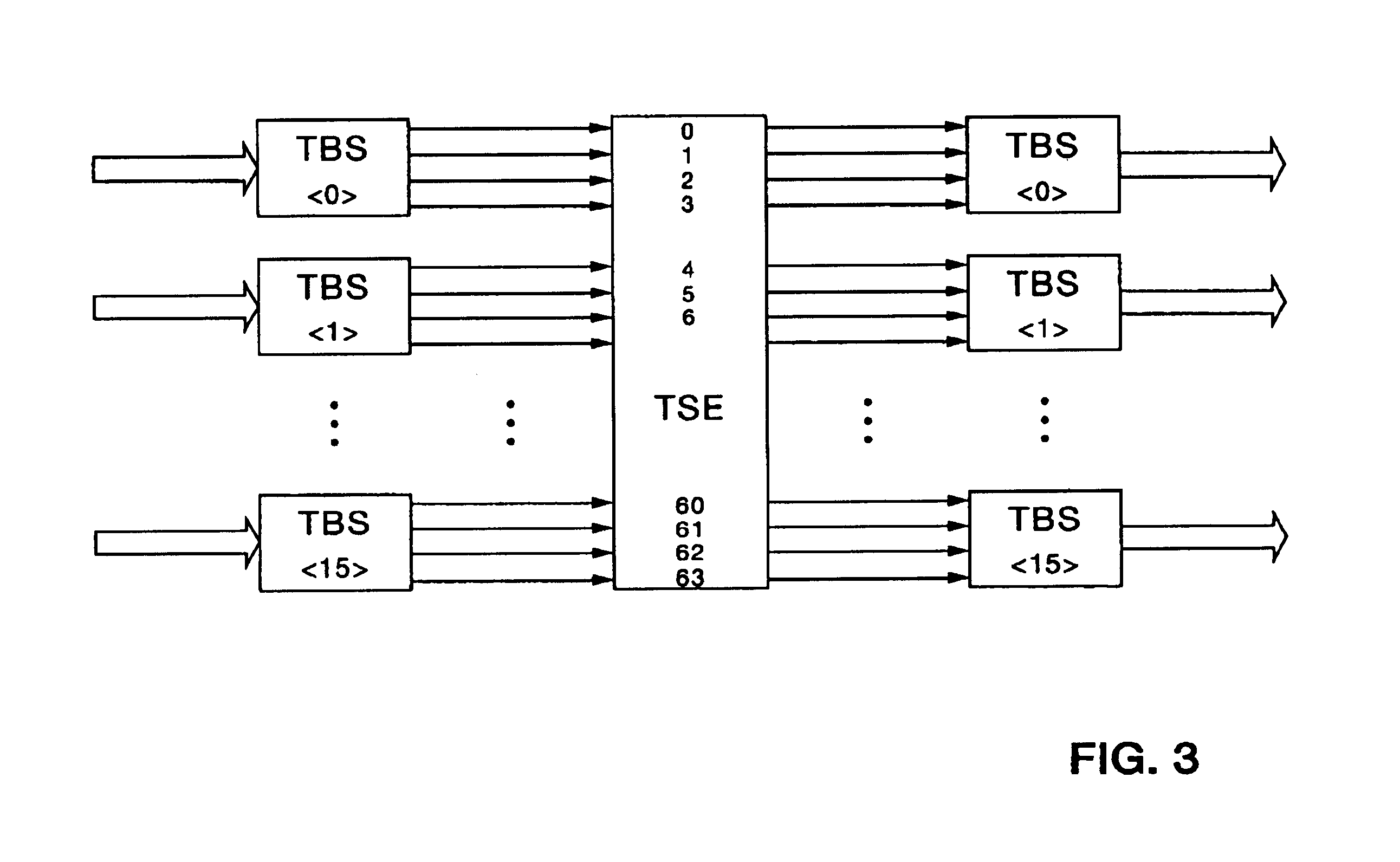Flexible, self-aligning time and space switch fabrics
a time and space switch fabric, self-aligning technology, applied in the direction of time-division multiplexing selection, transmission, electrical equipment, etc., can solve the problems of memory technology scaling, limited time:space:time fabrics, and less practical selection methods of egress multiplexers
- Summary
- Abstract
- Description
- Claims
- Application Information
AI Technical Summary
Benefits of technology
Problems solved by technology
Method used
Image
Examples
Embodiment Construction
The invention will now be described in greater detail, with reference to the accompanying drawings.
A “switching fabric” is the internal interconnect architecture used by a switching device, such as the FIG. 1 transmission switching element (TSE), to redirect data from one of the device's input ports to one of the device's output ports. The FIG. 1 TSE has 64 low voltage differential signal (LVDS) ports designated LVDS #0, LVDS #1, . . . LVDS #63. This is represented by the expression TSEports={64}. Each LVDS port carries one STS-12 signal link. The TSE has an STS-12 granularity time slot interchange (TSI) stage on each ingress and each egress STS-12 link. (“Granularity” represents the size of operations done by a process between communications events. A fine grained process may perform only a few arithmetic operations between processing one message and the next, whereas a coarse grained process may perform millions.) A 64×64 space switch is coupled between the TSE ingress and egress ...
PUM
 Login to View More
Login to View More Abstract
Description
Claims
Application Information
 Login to View More
Login to View More - R&D
- Intellectual Property
- Life Sciences
- Materials
- Tech Scout
- Unparalleled Data Quality
- Higher Quality Content
- 60% Fewer Hallucinations
Browse by: Latest US Patents, China's latest patents, Technical Efficacy Thesaurus, Application Domain, Technology Topic, Popular Technical Reports.
© 2025 PatSnap. All rights reserved.Legal|Privacy policy|Modern Slavery Act Transparency Statement|Sitemap|About US| Contact US: help@patsnap.com



